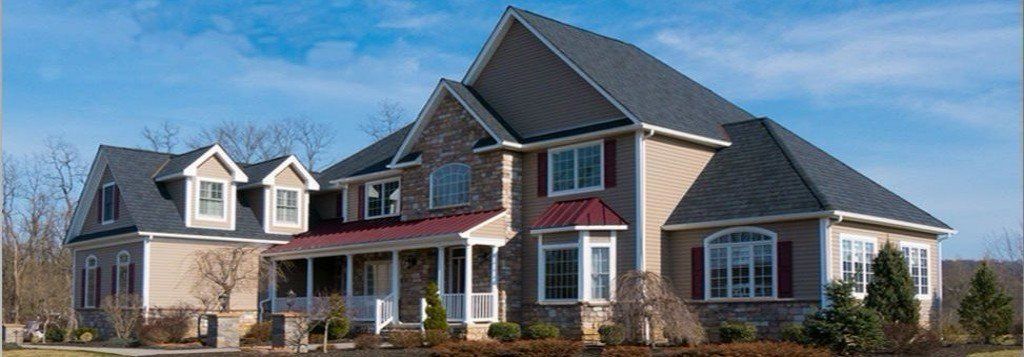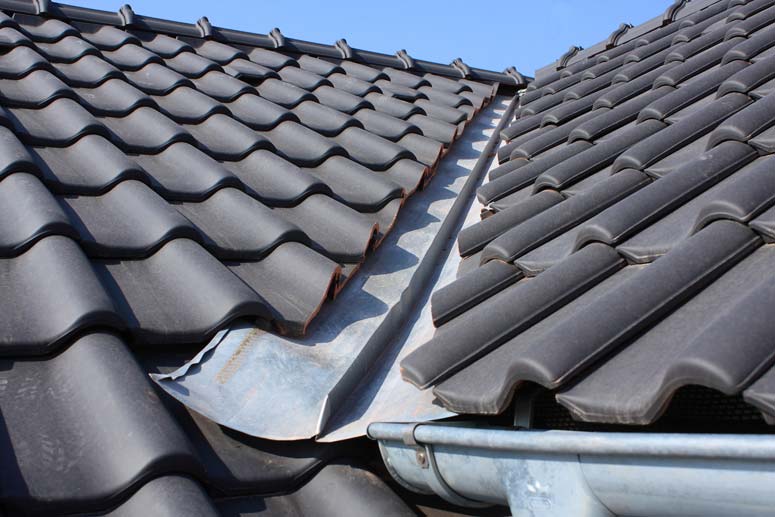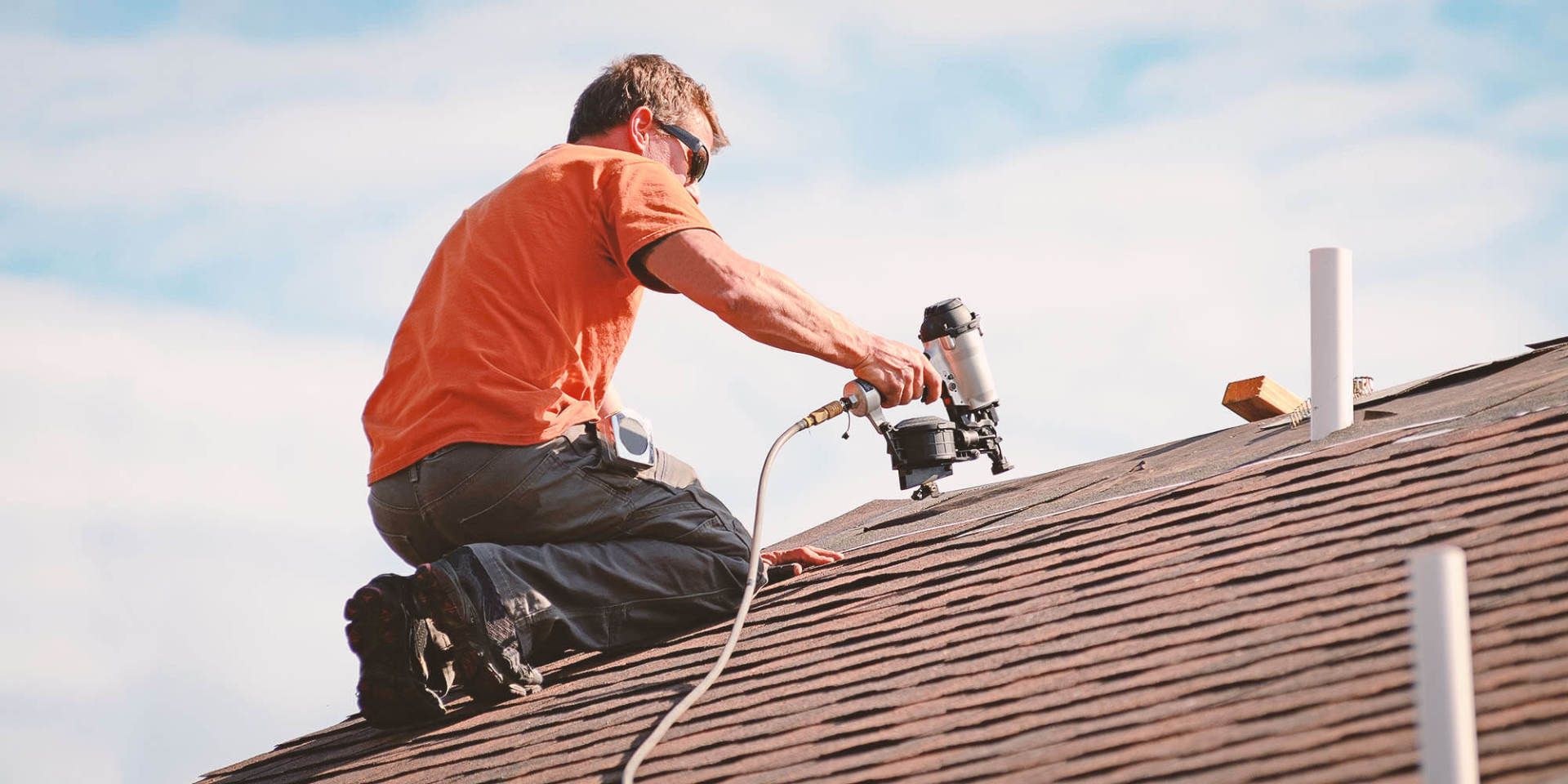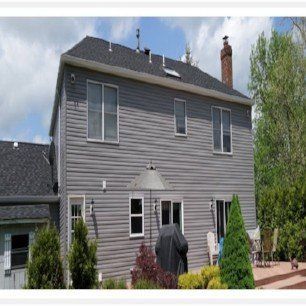Selecting A Roof Contractor In New Jersey
- By 7016353865
- •
- 13 Nov, 2018
- •
How to select a roofing contractor in New Jersey

Selecting a roofing contractor is one of the most important decisions you will make in building your new home or when it's time to reroof. The first step is to compile a list of possible contractors and take the time to evaluate each one carefully. A professional contractor will be happy to provide any information you may require.
Brett Hall:
I would tell them to avoid getting in to big of a hurry. If you have a leak problem, you've got some holes in your roof, or you're having some problems, get them temporarily repaired. Get those things taken care of to where you're not going to have a problem, and spend time, get yourself educated, and do that type of research where you really know you're making a good, wise, business decision.
Just spending time and not getting in a hurry because somehow people think that this is some sort of a very quick timeline and they're having to make a quick response and if they don't get it roofed today, they might not get it roofed. It's just not that way.
Speaker 1:
Check to see if the contractor is a member of any regional or national industry associations such as National Roofing Contractors Association. Being a member of an industry association demonstrates the commitment to professionalism. Call your local Better Business Bureau or Department of Professional Regulation to check for possible complaints filed against the contractor.
Brett Hall:
Every state differs with regards to bonding and licensures. It is a state by state requirement. You're going to be looking to ask that contractor, what does the state require? And, as a consumer, looking at those documents and saying, okay, here's the documents that they say they have.
There's also a lot of consumer driven websites where we, as contractors, can't buy what you write or what you say about us. We just have to think that we're doing the jobs right, in the beginning, and we get those positive reports from those clients because we're trying to take care of them.
Speaker 1:
Have the contractor explain his project supervision and quality control procedures. Request the name of the person who will be in charge of your project, how many workers will be required, and an estimated completion time. Choose a company committed to worker safety and education. Ask the contractor what type of safety training he provides for his workers, and what industry education programs they have attended. The best roofing contractor is only as good as the workers who install the roof system.
Brett Hall:
I think it's critical that you find someone that really has been in business and that will openly and voluntarily give you those referrals that you could call.
The consumer might say this. They might say, can I have your referrals from last week? You're putting the contractor on the spot. One, do they have a job that they did last week, or did they not do any work. But then, give me two names that you did last week. That way they don't go pull from their list and they give you their aunt or their cousin or someone who's going to give them a good recommendation. So, asking for very, very current work.
Speaker 1:
Selecting the best products as important to your job at selecting the right contractor. Ask questions about different materials, such as brand names, lifespan, thickness, design, and available colors. Carefully read and understand any roofing warranties offered, and watch for provisions that would void it.
Have the contractor list the roofing manufacturers with which his firm is a licensed or approved applicator. Many roof systems require special application expertise to achieve lasting quality.
Insist on a detailed written estimate, clearly stating the quantity of materials needed, labor charges, work specifications, which include approximate starting and completion dates, and payment procedures. If it sounds too good to be true, it probably is. Some contractors below cost bids seem attractive, but these contractors often are uninsured and may perform substandard work. Remember, price is only one of the criteria for selecting a roof contractor. Professionalism, experience, and quality workmanship also should weigh heavily in your decision.
The National Roofing Contractors Association, NRCA, has a residential roofing contractor qualification form to help homeowners and building owners prequalifying roofing contractors.

Speaker 1: To replace, or not to replace? That is the question.
Okay, so you've been ignoring your roof leaksfor some time now, and it's time to come to a decision. Is it worth replacing your roof? Or can you get away with a cheap repair? So, put simply, it comes down to two factors to consider, one being, the age of the property, and the other, the condition.
In the case that you're in an old Queenslander, as a original roof, or near original roof, it's probably time to do away with it. By the time leaks start popping up, it means that rust is starting to work its way through from the underside of the lapped roof sheets. Once it's gets through to the top, and allowing water into the building, it's pretty much showtime, so you definitely have need for a roof replacement there.
When it's repair applicable, if it's slam dunk, if you can guarantee that you're gonna get a result, and a guaranteed result. So, that means your property's say 10 to 20 years old, it might be a case of poor workmanship, or the sealing can be breaking down on some joints. And it might be just a case of resealing it, and you can get away with doing that quite cheaply, and save the full cost of a roof replacement.
NJ Roof repairs is something to be really mindful of getting yourself involved with. A lot of roofing companies are happy to quote on their repairs, however getting a guarantee.. And the reason for that being, is roof leaks, really frustrating things, even for roofers with decades of experience, still find it hard to diagnose certain leaks coming from multiple areas in the roof, and may not be actually anywhere near where you see it coming in on the interior of your home.
So, what's avoidable at roofing companies is the fact that they can fix post quote, they believe that they diagnosed it, and they do the work. The leaks persist, and they're forced into coming back to the site multiple times, each time spending money on their tradesman to find this fearsome leak, and all the time bleeding out financially.
So, a lot of companies are apprehensive to get involved in fixed price quotes. In the case that you are promised a guarantee, I would suggest that you ask them to step you through a plan on attacking the situation, and how comfortable they are in achieving a result for you the first time.
So, to sum it up, two main factors, you can see that one being the age and condition of your roof, and also the cheaper cost up front with repairs could bring a lot of headaches with it, and end up costing you more in the long run.
To replace, or not to replace. That's the question.
Thad: I'm Thad Barnett.
Adam: And I'm Adam Mazzella. And we're gonna teach you everything you need to know about metal roofing.
Thad: Welcome to Metal Roofing 101. Today's episode: What is a metal roof? I'm here at Deegan Roofing.
Adam: Today, we'll focus on your typical types of metal roof, painted steel, painted aluminum metal roofs that we predominately deal with in the industry today.
Thad: What makes a metal roof different from another type of roofing system like shingles, or tile, or something like that?
Adam: Well, a shingle system is typically an asphalt-based system. Other systems can be made out of plastics, or rubbers, or things like that. A metal roof is just that. It's made out of a variety of different metals, generally coming from the earth. You've got steel, which comes out as ore, you've got aluminum, you've got copper, zinc, stainless steel, thing like that. And it's just your typical roof covering and from there it's a pretty wide range. You can have face-fasten systems, you've got glue-down metal roof systems, and the typical system that we deal with is a standing seam metal roof system. Typically, a concealed-fastener system.
Thad: What about longevity? How long does metal roofing last?
Adam: Your typical metal roof can range from a variety of years, 20, 30 years all the way up to hundreds of years. There's copper and zinc roofs in Europe, for instance, that have been around for 200, 300 plus years. Steel is still relatively young compared to those types of roof systems. So, a galvalume system, for instance, the MCA, or Metal Construction Association, has studies out that a galvalume roof will last an excess of 60 years.
Thad: How about durability? How durable are metal roofing systems compared to other types of roofing systems.
Adam: A metal roof is considered very durable when compared to other roofing systems. You can get an engineered metal roofing system that can last through really high-velocity winds, in excess of 150 mph. And you go down to the islands, down to South Florida, the Gulf Coast, things like that. After a storm, you see a lot of the roofs that held up were standing seam metal roofs. That's not to say that one's bad, one's good, there's certainly an economical factor that you have to think about went in there, but metal roofing systems are predominately hail-rated. We've got hail ratings on all of our metal roof systems, as well as all of our engineered metal roofing systems can sustain high winds and are all tested in excess of UL 90.
Thad: So Adam, tell me about cost of the metal roofing. What is that like?
Adam: Well the cost is gonna range as well. You have your kind of low-end, your face-fastened egg panel type system, 26-, 29-gauge. Those are gonna be the most inexpensive systems. Where it gets more complex and more complicated is kind of where is scales up from there. If you're talking a concealed-fastened system, a fastener flange system for instance, that's gonna be on the lower end. Next step up would be your typical snap-lock system and next step up would be a mechanical-lock system. That really varies, mostly because of labor. Now, there's other things that are gonna effect the cost of a roof. That would be the complexity or geometry that's involved in installing. It costs much more right now than your typical shingle roof. Lets say you're looking at a standing-seam roof for your house. You've got a bid on a shingle roof and then you got a bid on a standing-seam roof. And you look at it and you're saying, well my shingle roof is a third of the cost of the metal roof, or 40% of the cost of the metal roof, which is pretty typical, pretty standard stuff that we see, or our end users see.
But you look at it. How long is your shingle roof gonna last? And depending on climate, could be 10 years, could be 20 years. Not much longer than that. Where a standing-seam roof, you know, like I said, they're lasting upwards of 40, 60+ years. If you look at the useful life cycle, metal actually, especially in today's dollars, and you factor in inflation, metal roof actually ends up being more cost-effective. But, it's also a larger investment upfront.
Thad: How about warranties, when it comes to commercial or residential buildings? You can put metal roofs on both types, so what are the warranties like?
Adam: Well, we offer several levels of warranties. You've got your finish warranties and your substrate warranties, as well as, our manufacturing warranties. I'll touch base on the substrate warranties. That's the metal, that's the metal only. That can be a bare metal or it can be a painted metal. We look at it like the metal's suppose to last 25, 25.5 years if it's a galvalume substrate. Our aluminum substrate warranty is a 20-year warranty and that just varies by the manufacture of the metal.
Beyond that, you have your paint warranty. Sherwin Williams or Valspar, they offer us a 40-year finish warranty on all of our PDVF products. Beyond the finish warrant and beyond the substrate warranty, we also offer weathertight warranties. The weathertight warranty is an option for predominately commercial or multi-family, on up type options. Where we actually uphold the warranty for the duration of time, covering against leaks, repairs, things like that.
Thad: How about maintenance of a metal roof? What is that like?
Adam: Maintenance of a metal roof is gonna be similar to maintenance of any other roof. If you see debris up there, just clean them off. Typical metal roof maintenance is generally gonna be a little less than a shingle roof, especially if you look at the longevity of the roof. You're not having to worry about a shingle flying of here or there, a potential leak here or there. It's pretty specific to the flashing points, so you're gonna want to make sure that if you've got sealant on certain areas that it's not degrading over time due to UV exposure. If you've got pipe boots, which most every roof does, especially residential roofs, you're gonna wanna make sure that those are tightly sealed.
These are all things that a typical roofing contractor can inspect for most homeowners, which we usually encourage homeowners to pass that on to a contractor to inspect or somebody that specializes in that.
Thad: When it comes to metal roofing materials, steel, copper, zinc, how eco-friendly are these metal roofs?
Adam: Metal roofs, in general, are all 100% recyclable. Now, that has an asterix with it, because there are other products that go into the roof itself that may not be, whether it's an asphalt-based underlayment, that's generally not recyclable. Occasionally, there's rubber products and things like that, butyl tapes and sealants that may not be recyclable. But, if you're strictly talking the metal, you can typically get it recycled. You get great scrape rates for steel, aluminum, copper, zinc, maybe not great for steel, but a lot of these other natural earth products are considered "precious-type metals". It's great that we can use them in architectural applications, because, when their useful life cycle ends, it can be recycled.
Thad: We talked about a ton of information today about metal roofing. Check out online. We have an e-book called "The Metal Roofing Buyer's Guide", over a hundred pages worth of information. It's free. Get it in the description and what you can do it, this Metal Roofing 101 series, you can literally follow along with the e-book as we're going through these videos, learning about all these different topics. And everything we talked today will be in future episodes of Metal Roofing 101 and on the metal roofing channel. So, be sure to subscribe to stay in the loop.









